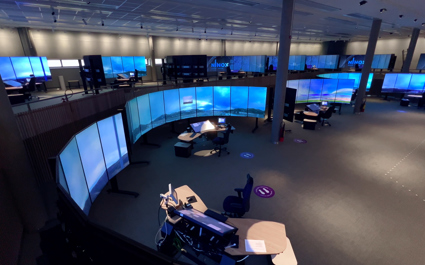Remote Towers: A new standard for air traffic management
Over the past decade, Kongsberg Defence & Aerospace and Avinor have worked closely to develop a new way of delivering air traffic control. What began with the NINOX programme agreement in 2015 has evolved into the world’s largest implementation of digital remote towers.
As of April 2025, 14 airports across Norway are managed from a single Remote Tower Centre (RTC) in Bodø, Norway. And, with the current schedule additional seven airports will go live within the next 2-3 years. In addition, a standalone digital tower solution – based on the same technology – will be established in Bodø by 2029.
Remote tower technology has moved from concept to operational reality – with Kongsberg Defence & Aerospace at the core of its development. In close collaboration with Avinor and Indra Navia, the digital tower system has been designed to deliver safe, flexible and cost-efficient air traffic services.






